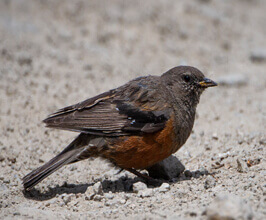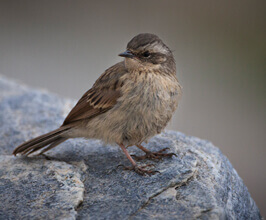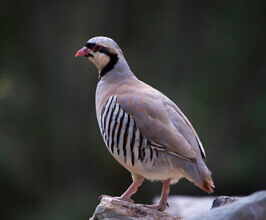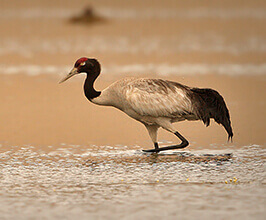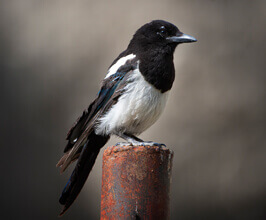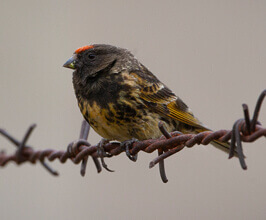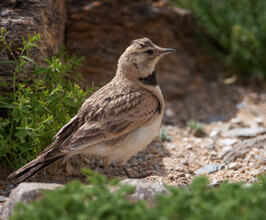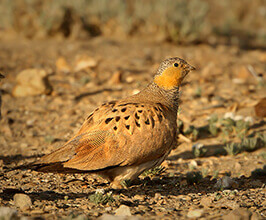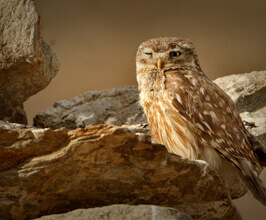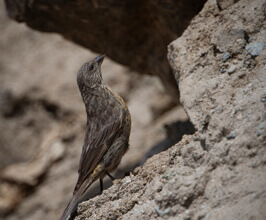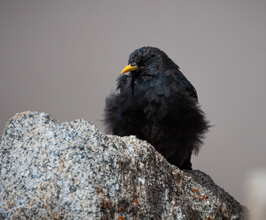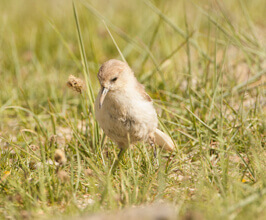Delhi – Leh - Khardung La - Puga - Tso Moriri – Tso Kar
10 Days / 09 Nights
Our Ladakh Birding Tour rouses the birder and mountain adventurer in you. It showcases rare Himalayan birds in the most pristine and surreal landscape of the world’s mightiest mountain range.
Booked as per
request.
Included except arrival and departure city.

Private guide for complete tour.
Airport to Airport.
2-8PAX
Included
Our Ladakh Birding Tour rouses the birder and mountain adventurer in you. It showcases rare Himalayan birds in the most pristine and surreal landscape of the world’s mightiest mountain range.
At the centre of our tour are birding expeditions at the two high-altitude lakes of Tso Moriri and Tso Kar in southeast Ladakh. These huge sapphire pools on a high Himalayan plateau are marvels of geography that beggar description. And there’s more to them than their unrivalled beauty. They are the top birding hotspots of Ladakh.
Tso Moriri (4522m) and Tso Kar (4530) are among the few breeding grounds in the world of Bar-headed Goose and Black-necked Crane. Tso Moriri (Tso means ‘lake’ in Tibetan) is the bigger of the two, and is the pit-stop for many migratory birds from the north. Brown-headed Gulls fly in from Central Asia every year and can be seen in large numbers. A birding excursion along the lake’s bank yields the sights of Ruddy Shelduck, Black-necked Grebe, Lesser Sand Plover, White-winged Black Tern, Great Crested Grebe, Long-legged Buzzard and the rare Arctic Skua.
The same cast of Himalayan birds can be seen at the saltwater Tso Kar and its smaller, freshwater cousin, Tso Startsapuk nearby. In addition, these two lakes host Tibetan Sandgrouse, Great-horned Lark, Tibetan Snowfinch, Plain-backed Snowfinch, Twite, Eurasian Linnet, Striated Rosefinch, Great Rosefinch, Tibetan Partridge, Red-throated Pipit, Altai Accentor, Hill Pigeon, Red-crested Pochard, Eurasian Nightjar, Golden Eagle, Upland Buzzard, Common Kestrel and Little Owl.
For birds of higher altitude, we scour the Himalayan mountain passes of Ladakh. The highest of these passes is Khardung La (5359m) about 45 km north of Ladakh’s capital Leh. A birding tour of Khardung La reveals the likes of Blue-fronted Redstart, Robin Accentor, Golden Eagle, Great Rosefinch, Upland Buzzard, Snow Partridge, Lammergeier, Chukar, Güldenstädt's Redstart, Wallcreeper, Yellow-billed Chough, and Red-billed Chough.
Close to the lakes, Polo Kongka La (La means ‘pass’) at the height of 4970 meters yields huge flocks of Brandt’s Mountain Finches, and Namshang La (4960m) hosts White-throated Dipper, Eurasian Eagle-owl, Robin Accentor, Asian House Martin, and White-winged Redstart.
The checklist of Ladakh birdwatching tour comes out longer if you include the avian specialties along the banks of the river Indus in the initial days of the trip.
INDIA BIRDING TOURS has designed an exclusive birdwatching trip of Ladakh, keeping in mind the rigours of travelling at high altitude. Leh (3524 meters) is the starting point of our Ladakh tour and we give you a day or two to acclimatize to the high-altitude conditions by sticking to short birding excursions around Leh and along the Indus. Once acclimatized, we head for the altitudes upwards of 4000 meters for once-in-a-lifetime experience of birding in Himalayas. Over the course of ten days, we see many interesting avian specialties alongside Himalayan wildlife such as Tibetan Ass, blue sheep, fox, weasel, marmot, woolly hare and pika. Visits to Buddhist monasteries have been included to make the trip culturally immersive, and outdoor camping in Himalayan landscape completes our Ladakh birding adventure.
Lodging: Birding in Ladakh takes us to remote places where very basic accommodation is available. On three nights back-to-back we stay in tented accommodation with comfortable beds. The bright side is the beautiful locations of these camps. One is by the side of Tso Moriri, a huge lake in the desolation of a high Himalayan plateau. Likewise, we camp out a night each at Puga and Tso Kar. These camps are smack in the middle of birding sites and add to your Ladakh birding holiday experience.
Meals: Both vegetarian and meat-based meals are on the menu, throughout our Ladakh tour but the choices may be limited in remote areas where, instead of dining in hotels or restaurants, we have bonfire picnics. Here, our kitchen staff takes charge and rustles up simple but delicious meals we enjoy in wide open Himalayan landscape. Taste and hygiene are never compromised with. While in cities such as Leh and Delhi, we eat at hotels or try out popular restaurants, as per your wishes.
Tour Difficulty: Birding in the Himalayas is never easy. You have to contend with high-altitude conditions, unexpected weather changes, and rough mountainous terrain. Of course, our itinerary is designed to help you acclimatize to Ladakh’s high altitude, but you have to be physically and mentally fit to do birding at altitudes that are upward of 4000 meters. For this reason, our Ladakh birdwatching tour is restricted to people within the age group of 15 to 65 years. The birding walks on this tour are short and not far from camps.
Tour Extension: For a more extensive travel experience of India, we offer tour extensions involving a visit to the Taj Mahal, the most iconic monument of India. Of if you hunger for wildlife adventure, we can always punch in a visit to Corbett National Park or Ranthambore National Park where you can go on tiger trails. Or you may simply want to explore more of Ladakh. We can put in culture trips to the Buddhist monasteries of Ladakh. Just inform us well in advance about the kind of extension you want and we will make the arrangements.
Climate: Ladakh is a cold and arid Himalayan region. The winters are freezing cold and the summers are pleasant, but the direct sun at these high altitudes gives you a tan in no time. The summers and autumn are the best seasons for birdwatching in Ladakh. Do carry your winter clothes, good sunshades, and a quality sunscreen lotion. All these can be bought in Leh’s market as well. Nights and mornings during the outdoor camping can be cold and windy. The air is thin at high altitude of Khardung La and the Tso Moriri and Tso Kar lakes.
India’s national capital Delhi is where the birding tour of Ladakh begins. Clients flying in from abroad usually arrive late in the evening. Our representative meets you at the airport and transfers you to a pre-booked hotel in Delhi. If you arrive early, we can use up the time to discuss the tour in detail, apprise you thoroughly of the tour plan, and get acquainted over tea or coffee. Dinner and overnight at Delhi hotel.
We take an early morning flight from Delhi to Leh, the capital city of Ladakh. Through the porthole, you get the stunning aerial view of the majestic Himalayan peaks as the plane approaches Leh, an oasis in the high-altitude desert of Ladakh.
Leh sits at the height of 3,524 meters in the Himalayas, and a traveller flying in from the low-lying Delhi may need a day to acclimatize. That’s what we use this day for. But that doesn’t mean crashing out at the hotel in Leh. If you feel up to it, we may head out for a India Short Birding Tours around the river Indus that flows to the south of Leh. Here, we may look out for Ibisbills and White-winged Redstarts, besides other Himalayan beauties. Or you may visit the Leh Palace, Gompa and Shanti Stupa – all three built on the hills surrounding the city and accessible by motorable road, though we suggest trekking up to them to get used to the high elevation conditions. Or, if you don’t want to push it, you may simply explore Leh. It’s a lively place that bustles with tourists from the world over and shops selling a wide range of items from exquisite Kashmiri rugs and Buddhist statues to books, garments and mountaineering gears. You may even visit a Buddhist monastery in the market.
Dinner and overnight at the hotel in Leh.
Around the big oasis of Leh are several small oases that have become centres of habitation in the largely arid landscape of Ladakh. These green patches in rocky desolation host an interesting variety of Himalayan birds. It’s these birds we target in our birding tour around Leh.
We head out towards the east of Leh to the Thiksey Monastery that sits atop a pyramidal hill dotted with monks’ quarters on its lower slope. We time our visit to coincide with the prayer ritual of the monks so that you get to witness centuries’ old tradition. Thiksey Monastery was founded in 1480 CE and its biggest attraction is a giant, 30-foot statue of Maitreya, the future Buddha. The statue is often touted as the most beautiful work of sculpture in Ladakh and is well worth seeing. The monastery also boasts colourful mural paintings depicting deities or episodic scenes from the Buddhist lore. After visiting the monastery, we will scour the banks of the river Indus for a few avian specialties.
In the evening, we return to Leh for dinner and overnight.
Well acclimatized to the Himalayan heights by now, we head out for birding in the higher elevations to the north of Leh. The road winds up steeply for several kilometres till it reaches the Khardung La mountain pass (5359m), which was till recently the highest motorable road in the world.
The excursion gives us a chance to see several high altitude birds of Ladakh, namely Blue-fronted Redstart, Robin Accentor, Golden Eagle, Little Owl, Great Rosefinch, Upland Buzzard, Snow Partridge, Lammergeier, Chukar, Güldenstädt's Redstart, Plain-backed Snowfinch, Wallcreeper, Yellow-billed Chough, Red-billed Chough, Brandt's Mountain Finch and many others. The pass itself is a sort of fun spot for bikers, cyclists, and vacationers who stop by to grab a bite at a restaurant and click pictures with the famous milestone of Khardung La. The pass also affords an excellent panoramic view of several snow-capped Himalayan peaks. It’s a great spot for photography.
We do our birdwatching on the way up to Khardung La and back down to Leh. Though the nonstop drive takes a little more than an hour one way, we stop several times on our journey to watch the birds of Ladakh. Overnight at the hotel in Leh.
The Ladakh region has several pristine lakes that are home to a wide variety of Himalayan birds. One such lake is Tso Moriri (Tso means ‘lake’ in Tibetan), located 210 km to the south east of Leh in a landscape that has human habitation few and far between. On the way to this lake are some birding hotspots worth exploring.
One such hotspot is a village called Chumathang, which is situated right along the banks of river Indus and is quite famous for its hot springs. Distance from Leh to Chumathang is about 140 km, but the journey takes about 4-5 hours because of the mountainous terrain. Upon arrival at this remote village, we go on a birding tour to look for the likes of Golden Eagle, Lammergeier, Tibetan Partridge, Common Merganser, Tibetan Snowcock, Ibisbill, Horned Lark, Eurasian Eagle-owl, and Upland Buzzard. From Chumathang we continue our journey to Puga village where we get to spot Black-necked Crane, Brown-headed Gull, and Ruddy Shelduck. Though most of the journey happens in a pretty desolate landscape, we may come upon animals such as wolf, fox, weasel, blue sheep, woolly hare, marmot and pika.
Dinner and overnight at tented accommodation at Puga. If you wish, we may have a little bonfire picnic at night.
We start the day with an early morning drive to Tso Moriri lake. The road cuts through a surreal Himalayan landscape to Lake Kiagar before heading south to Tso Moriri.
Tso Moriri is a large lake situated at the altitude of 4522 meters. The lake is a birdwatchers’ delight and is one of the few breeding grounds in the world for Bar-headed Goose and the rare and endangered Black-necked Crane. Besides these two beauties, the birding tour of Tso Moriri yields sightings of Ruddy Shelduck, Brown-headed Gull, Black-necked Grebe, Lesser Sand Plover, White-winged Black Tern, Great Crested Grebe, and Long-legged Buzzard. If we are lucky, we may be rewarded with a rare sight of Arctic Skua. During the day, we also bird at the Namshang La (mountain pass at 4960m) and Thadsang Karu to search for White-throated Dipper, Eurasian Eagle-owl, Robin Accentor, Asian House Martin, White-winged Redstart, and Lammergeier. Apart from these birds, we also come across an interesting variety of mammals such as blue sheep, fox, weasel, marmot, woolly hare and pika. If time permits, we may even visit the Korzok Gompa not far from Tso Moriri.
The evening is going to be most special with a bonfire along the banks of Tso Moriri. We overnight at Tso Moriri camp tents.
From Tso Moriri, we head out to another lake popular for hosting migratory birds: Tso Kar. The name literally means white lake, on account of the white salt deposits around it. Tso Kar is a salt-lake and it hosts a lot of waders and raptors. To the south of Tso Kar is a smaller freshwater lake called Tso Startsapuk.
We target the birds on both Tso Kar and Tso Startsapuk. Here we look for avian specialties such as Bar-headed Goose, Ruddy Shelduck, Great Crested Grebe, Lesser Sand Plover. A stroll down to the boggy marshes to the east of Tso Kar usually reveals Black-necked Cranes. It’s also not uncommon to see here a Tibetan Sandgrouse and a number of waders. Not just the lakes, the grasslands and hillsides nearby buzz with several accentors, larks and finches, the most prized sight of which is that of Plain-backed Snowfinch. We also get to see the raptors such as Golden Eagle, Upland Buzzard, Common Kestrel and Little Owl.
Another big attraction of Tso Kar is the Tibetan Ass. There is a small village to the north of Tso Kar called Thukje. We may overnight at a lodge here.
We start the day with an early morning birding tour of Tso Kar and try to mark off the missing bird species in the checklist. Our main targets are Black-necked Cranes, Bar-headed Geese, and Ruddy Shelducks.
Birding at Tso Kar also yields interesting sightings of Great-horned Lark, Tibetan Snowfinch, Plain-backed Snowfinch, Twite, Eurasian Linnet, Striated Rosefinch, Great Rosefinch, Raven, Tibetan Partridge, Tibetan Sandgrouse, Red-throated Pipit, Altai Accentor, Hill Pigeon, Brown-headed Gulls, Red-crested Pochard, Eurasian Nightjar, and Upland Buzzard. The return journey to Leh takes us through Polo Kongka Pass at the height of 4970 meters. Brandt’s Mountain Finch can be seen here in huge flocks. We take a short break from our journey to scour the areas around the pass for Little Owl, Tibetan Sandgrouse, Plain-backed Snowfinch, Horned lark, Hume’s short-toed Lark and Tibetan Snowfinch.
In the evening, we arrive in Leh and check into a hotel for dinner and overnight.
We transfer you to Leh Airport for a morning flight to Delhi. You arrive in Delhi by afternoon and check into a hotel. To cap the Ladakh Birding Tour we take you on a sightseeing tour of Delhi. Or if you are hungry for more birding, we may take you to Okhla Bird Sanctuary, located at Okhla barrage on the outskirts of the city.
As many as 300 bird species have been spotted here and our targets for the day include two endemic species, Striated Babbler and White-tailed Stonechat, besides several other birds such as Eurasian Collared-Dove, Laughing Dove, Yellow-footed Green-Pigeon, Greater Coucal, Asian Koel, Grey-headed Swamphen, White-breasted Waterhen, Black-winged Stilt, Red-wattled Lapwing, Pheasant-tailed Jacana, Temminck's Stint, Wood Sandpiper, Whiskered Tern, Oriental Darter, Great Cormorant, Indian Cormorant, Grey Heron, Cattle Egret, Indian Pond-Heron, Black-headed Ibis, Black Kite, Spotted Owlet, Indian Grey Hornbill, Common Kingfisher, Green Bee-eater, Brown-headed Barbet, Rose-ringed Parakeet, Black Drongo, Long-tailed Shrike, Ashy Prinia, Plain Prinia, Sykes's Warbler, Clamorous Reed Warbler, Plain Martin, Red-whiskered Bulbul, Indian White-eye, Rosy Starling, Bank Myna, India Robin, Oriental Magpie-Robin, Bluethroat, Pied Bushchat, Citrine Wagtail, Paddyfield Pipit, and Red-headed Bunting.
In the evening we return to our Delhi hotel for dinner and overnight.
In the morning, we transfer you to Delhi Airport for your onward journey. The birding tour of Ladakh comes to an end.
